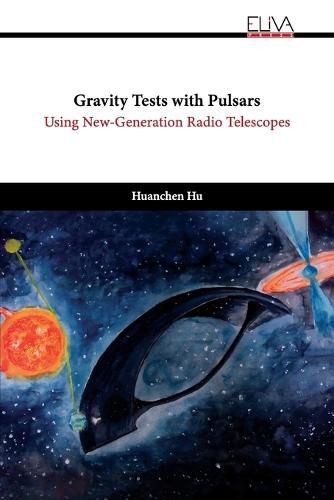Readings Newsletter
Become a Readings Member to make your shopping experience even easier.
Sign in or sign up for free!
You’re not far away from qualifying for FREE standard shipping within Australia
You’ve qualified for FREE standard shipping within Australia
The cart is loading…






General relativity has so far passed all experimental tests, with some of the most stringent tests in strong fields coming from observations of pulsars - rotating neutron stars that form from the collapsed cores of massive stars during supernovae. Such compact objects contain the densest form of matter in the observable universe, and therefore produce a strong gravitational field in their vicinity. The excellent rotational stability of pulsars makes them powerful tools for studying a wide range of topics in fundamental physics. This dissertation investigates four aspects using the new generation of radio telescopes: (1) constraining the dense matter equation of state by measuring the moment of inertia of neutron stars, (2) testing higher-order gravitational light propagation effects in the Double Pulsar system using observations from the MeerKAT telescope, (3) prospects of testing scalar-tensor gravity using pulsar-white dwarf system and hypothetical pulsar-black hole systems, and (4) recent advances in the detection of nanohertz gravitational waves using pulsar timing arrays and efforts to improve it.
$9.00 standard shipping within Australia
FREE standard shipping within Australia for orders over $100.00
Express & International shipping calculated at checkout
General relativity has so far passed all experimental tests, with some of the most stringent tests in strong fields coming from observations of pulsars - rotating neutron stars that form from the collapsed cores of massive stars during supernovae. Such compact objects contain the densest form of matter in the observable universe, and therefore produce a strong gravitational field in their vicinity. The excellent rotational stability of pulsars makes them powerful tools for studying a wide range of topics in fundamental physics. This dissertation investigates four aspects using the new generation of radio telescopes: (1) constraining the dense matter equation of state by measuring the moment of inertia of neutron stars, (2) testing higher-order gravitational light propagation effects in the Double Pulsar system using observations from the MeerKAT telescope, (3) prospects of testing scalar-tensor gravity using pulsar-white dwarf system and hypothetical pulsar-black hole systems, and (4) recent advances in the detection of nanohertz gravitational waves using pulsar timing arrays and efforts to improve it.